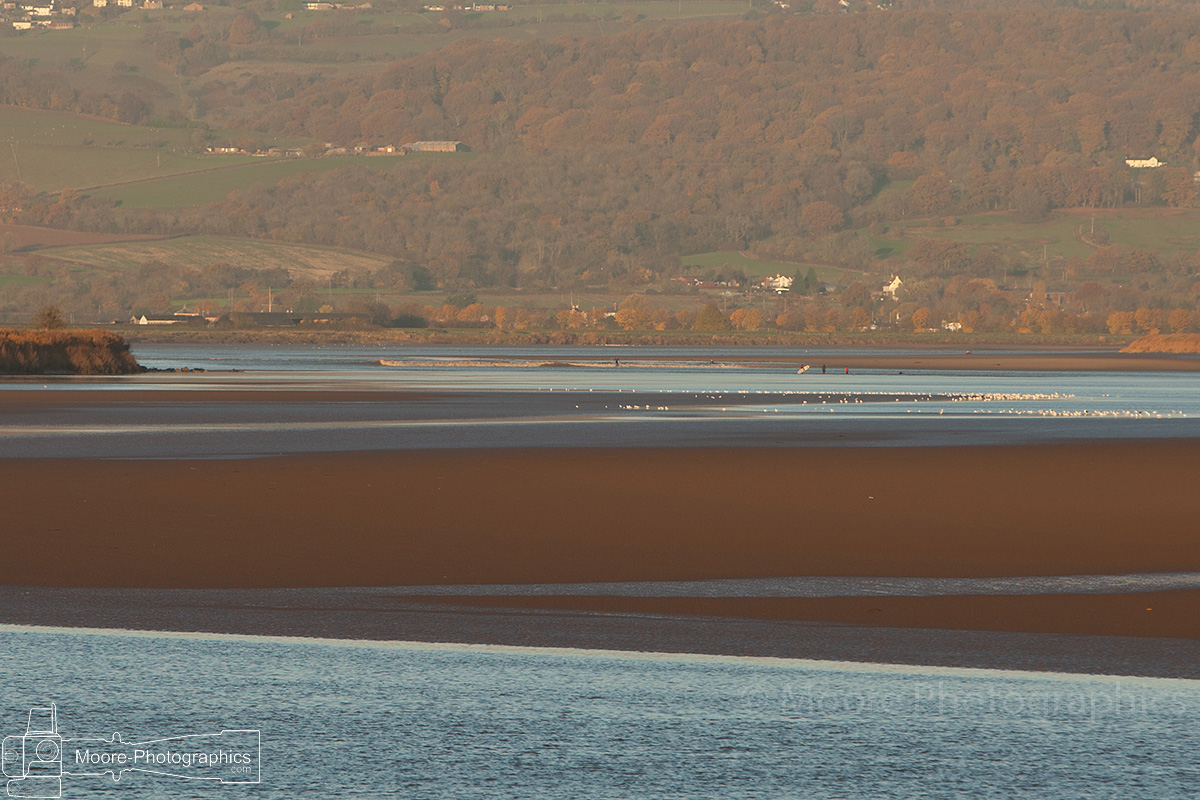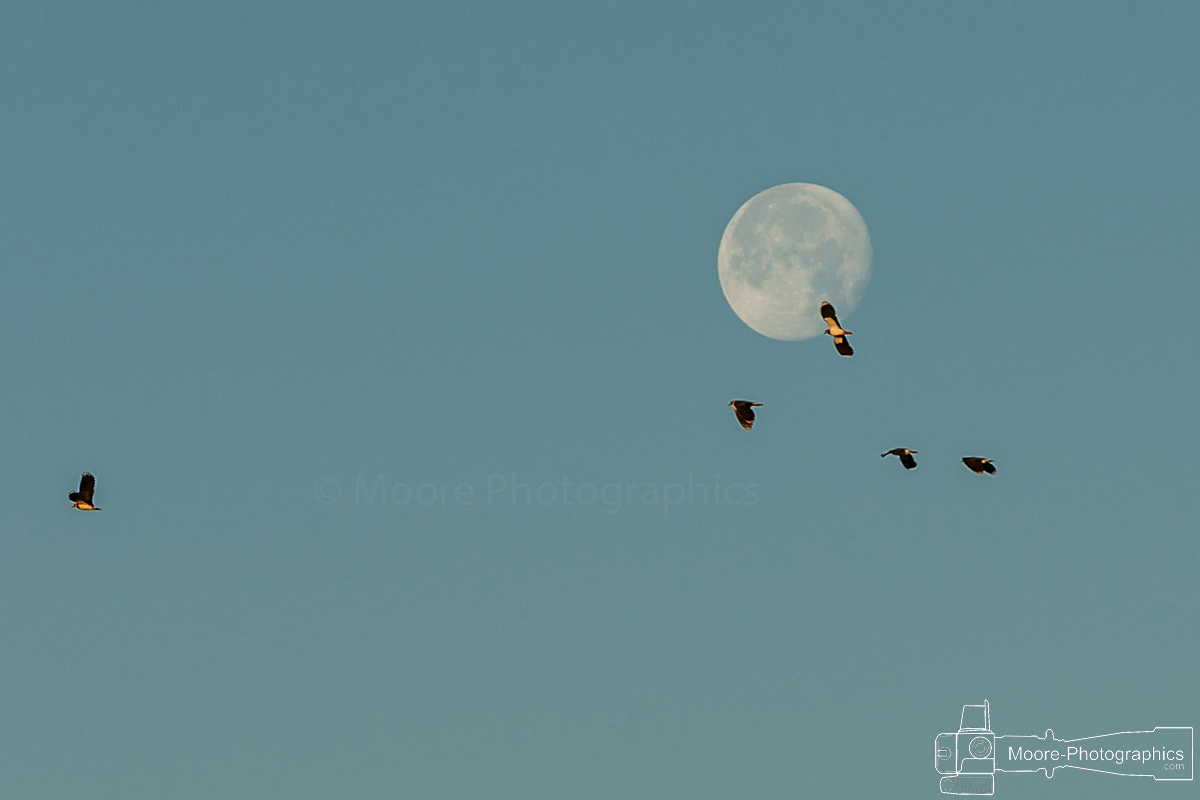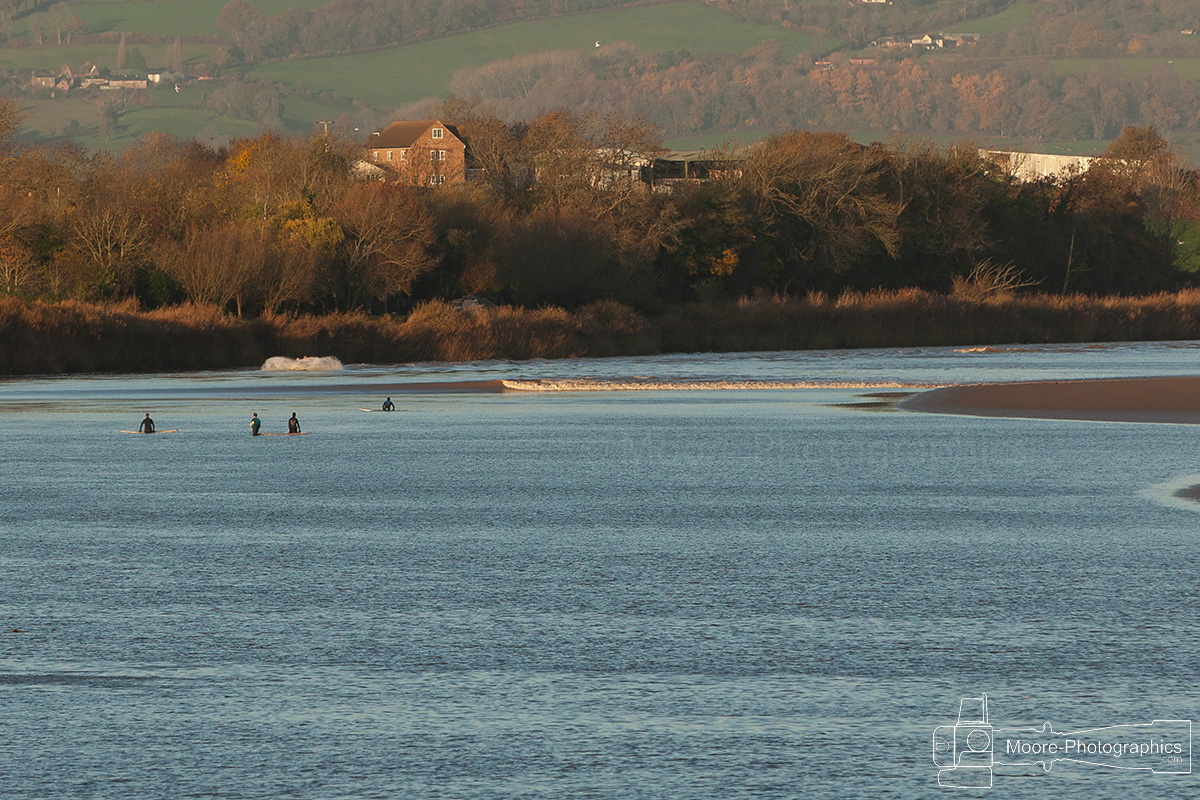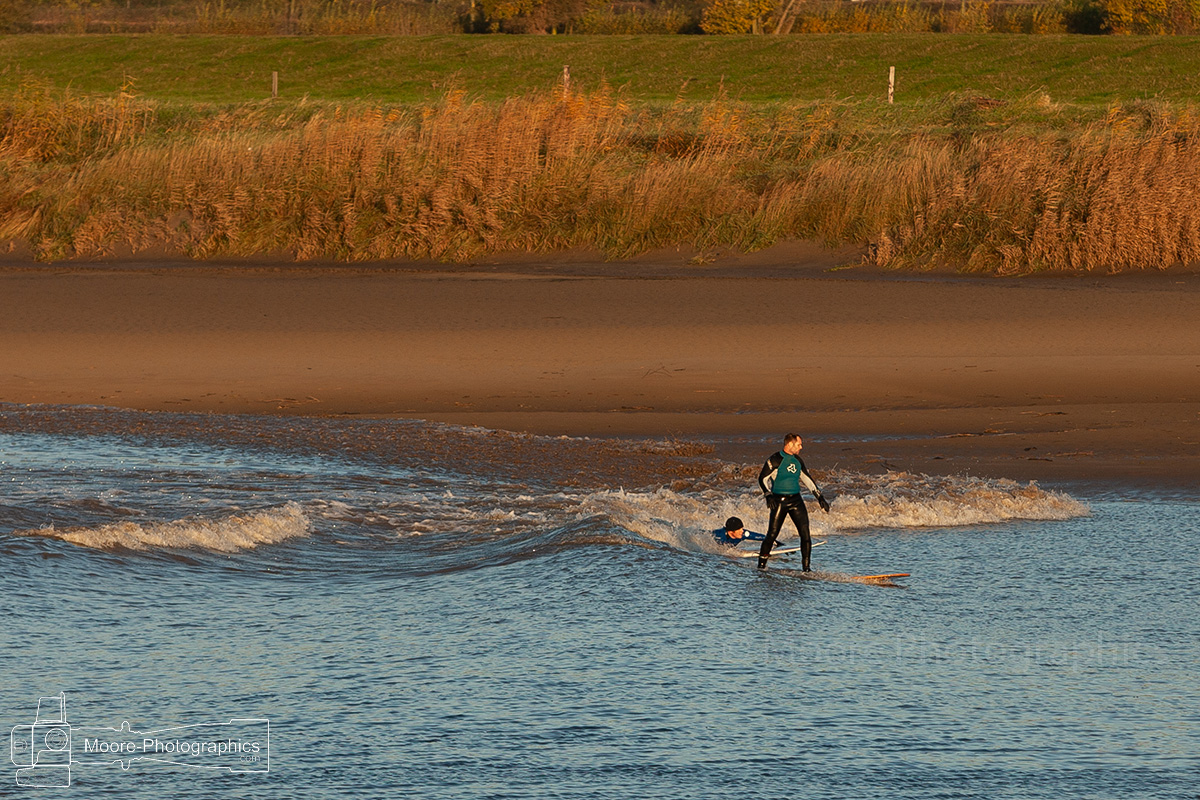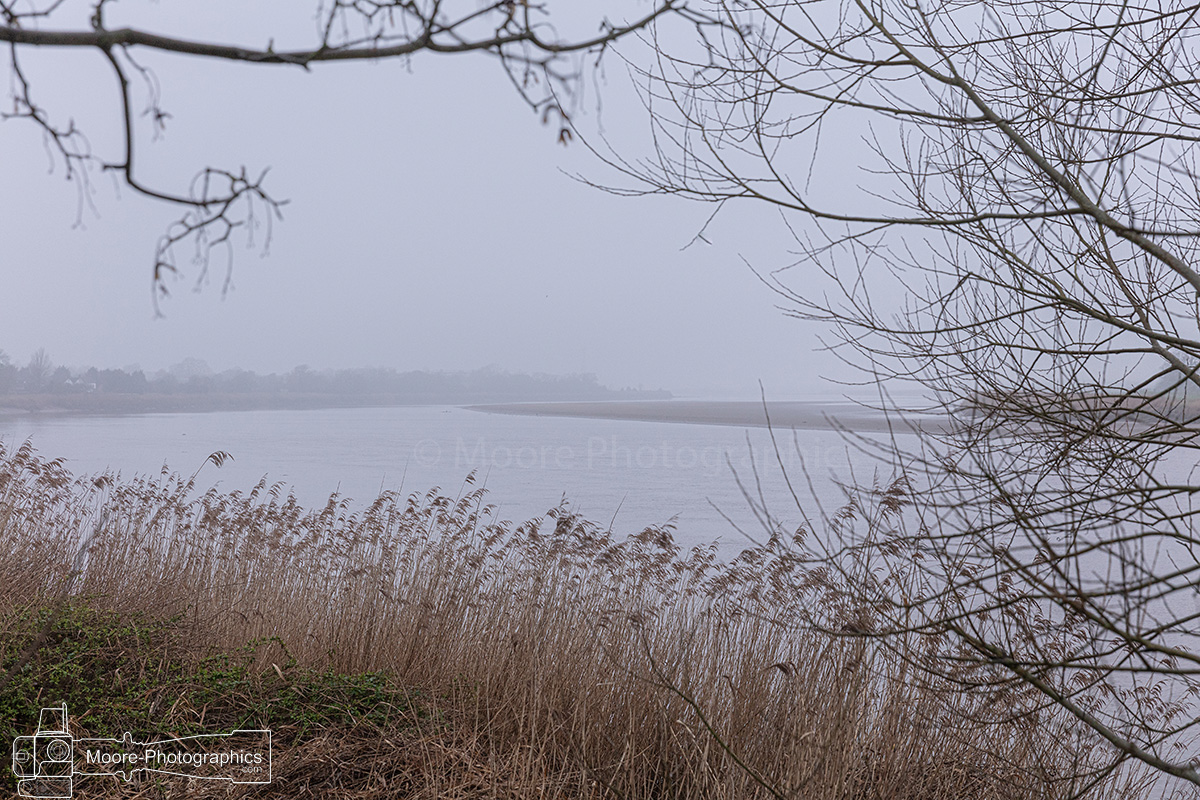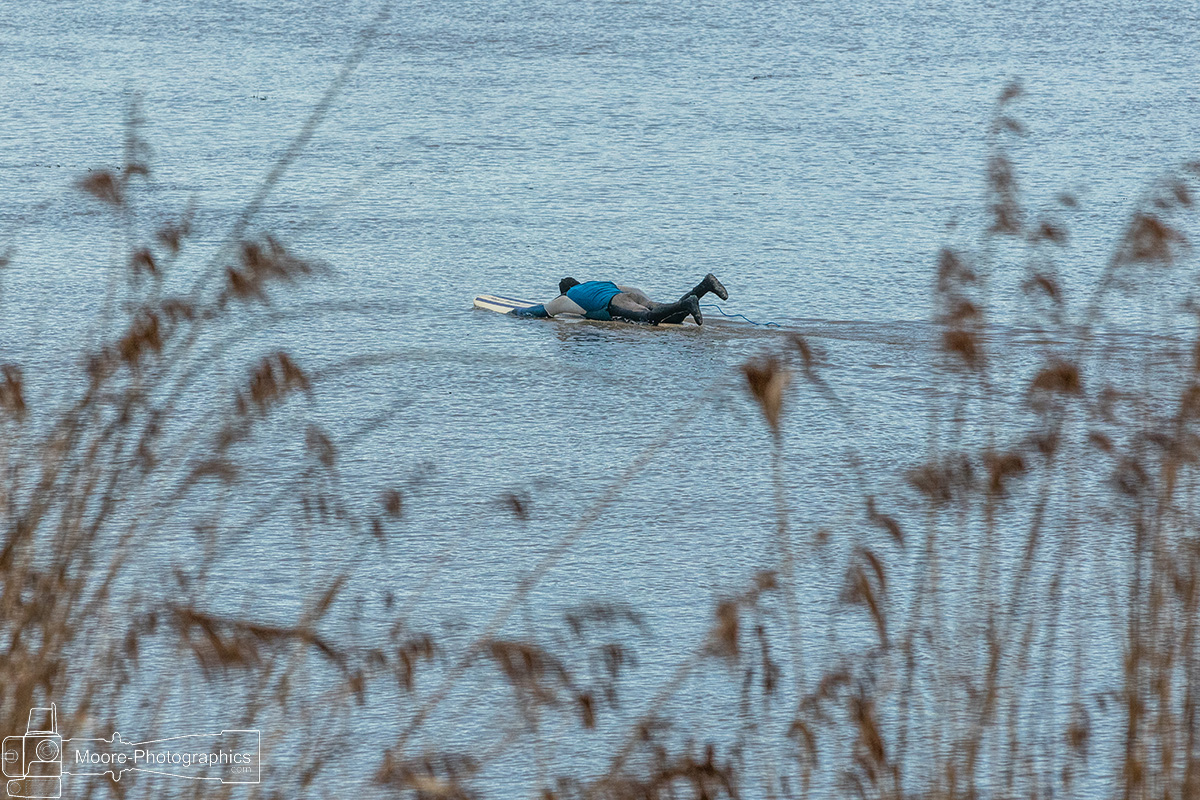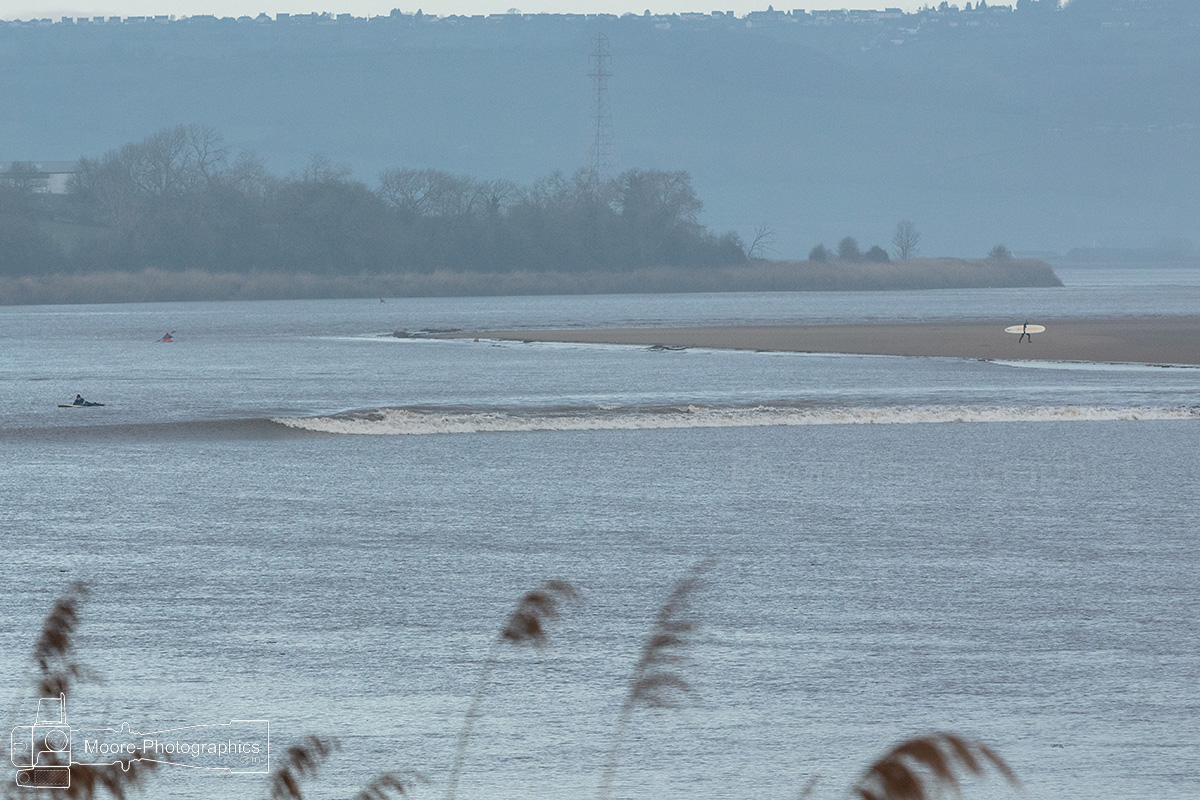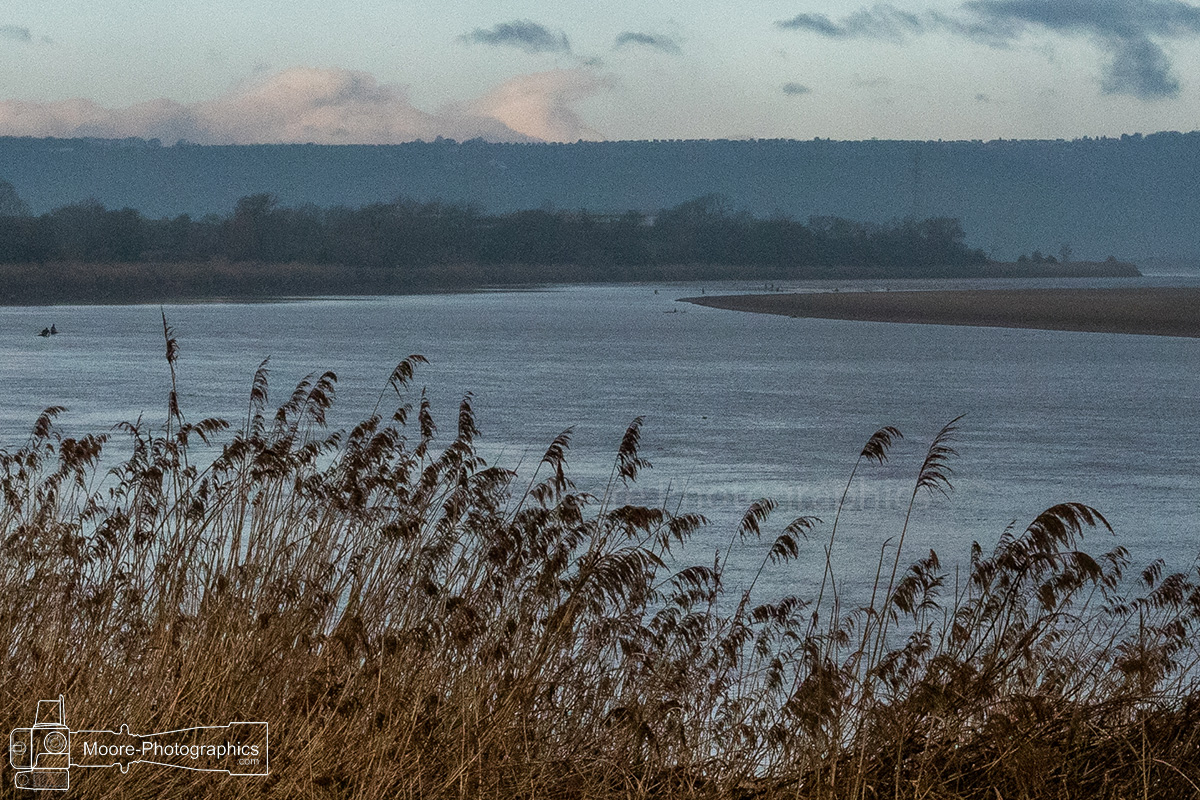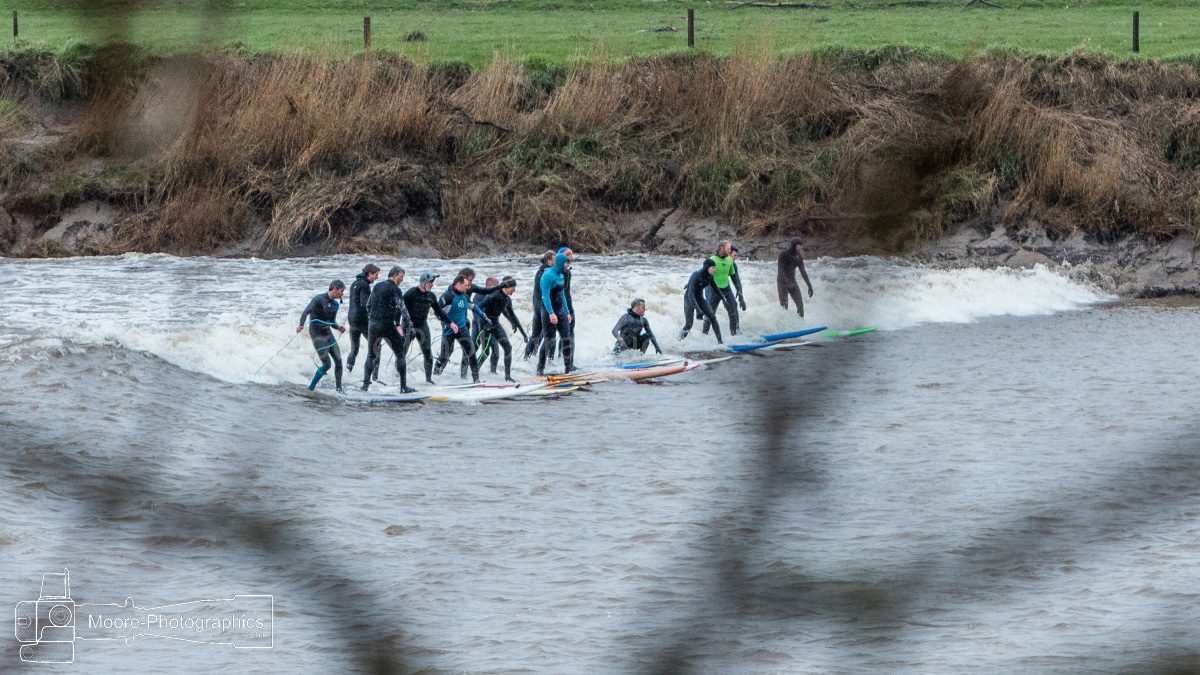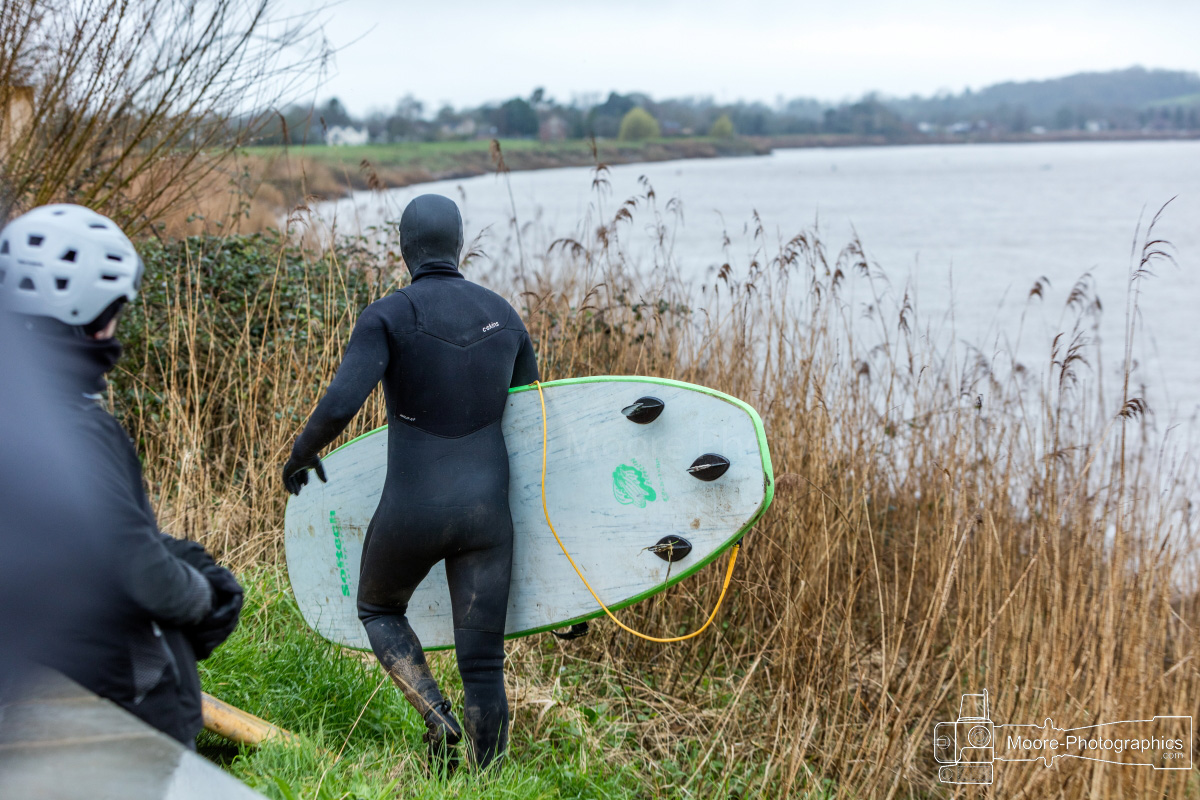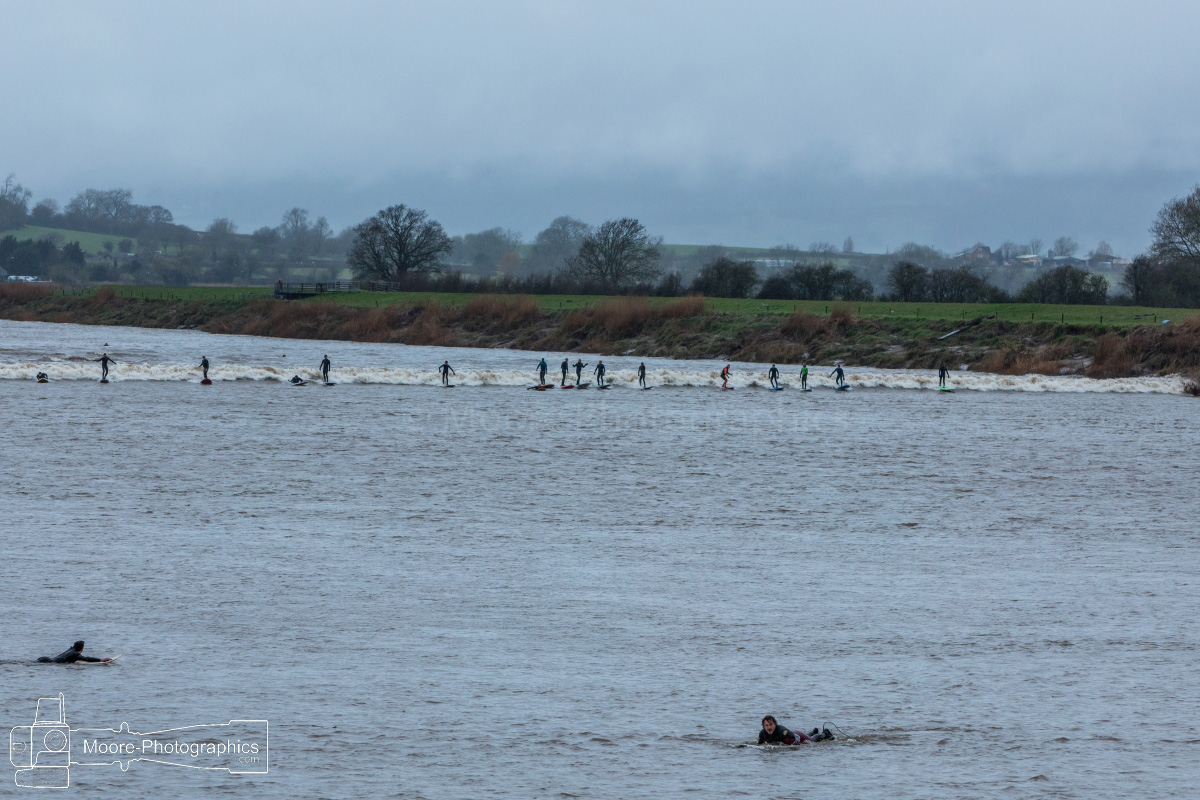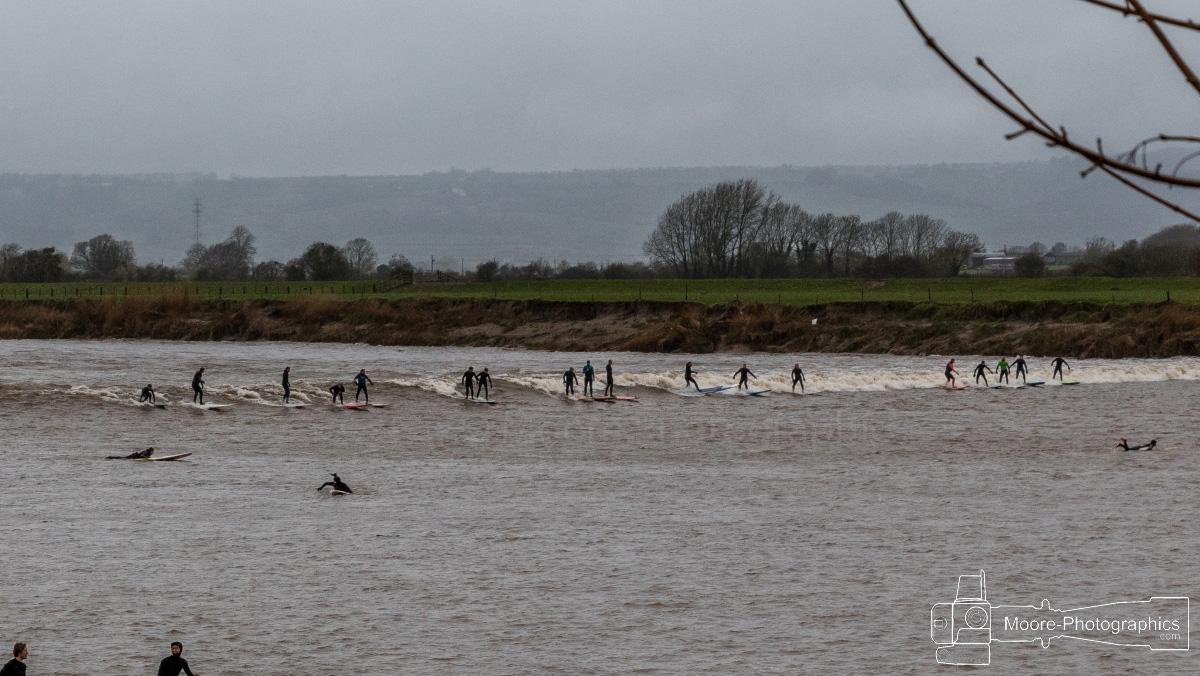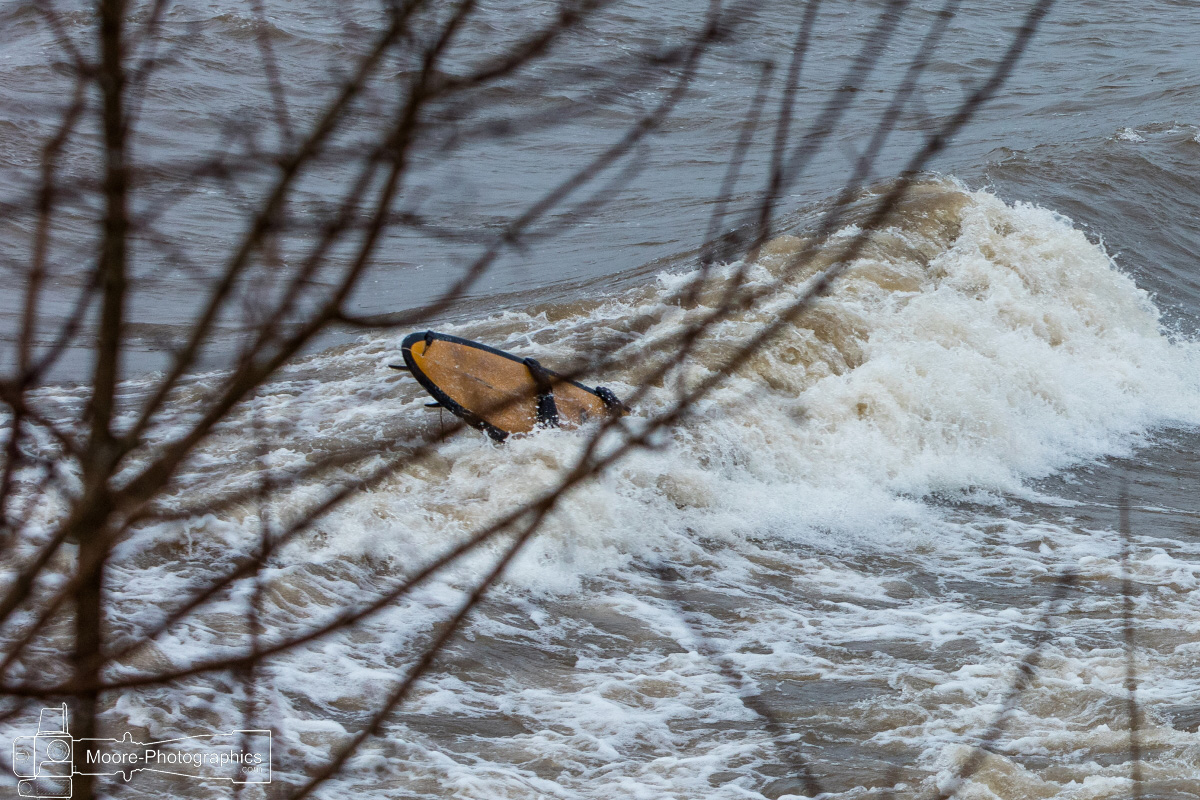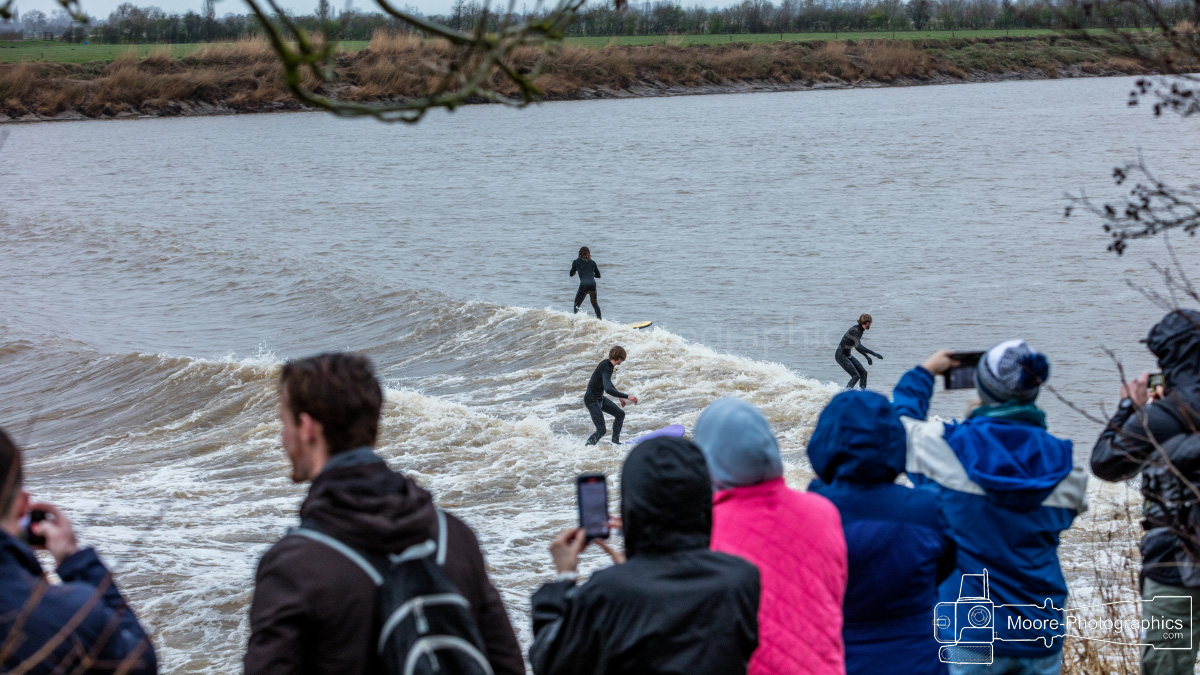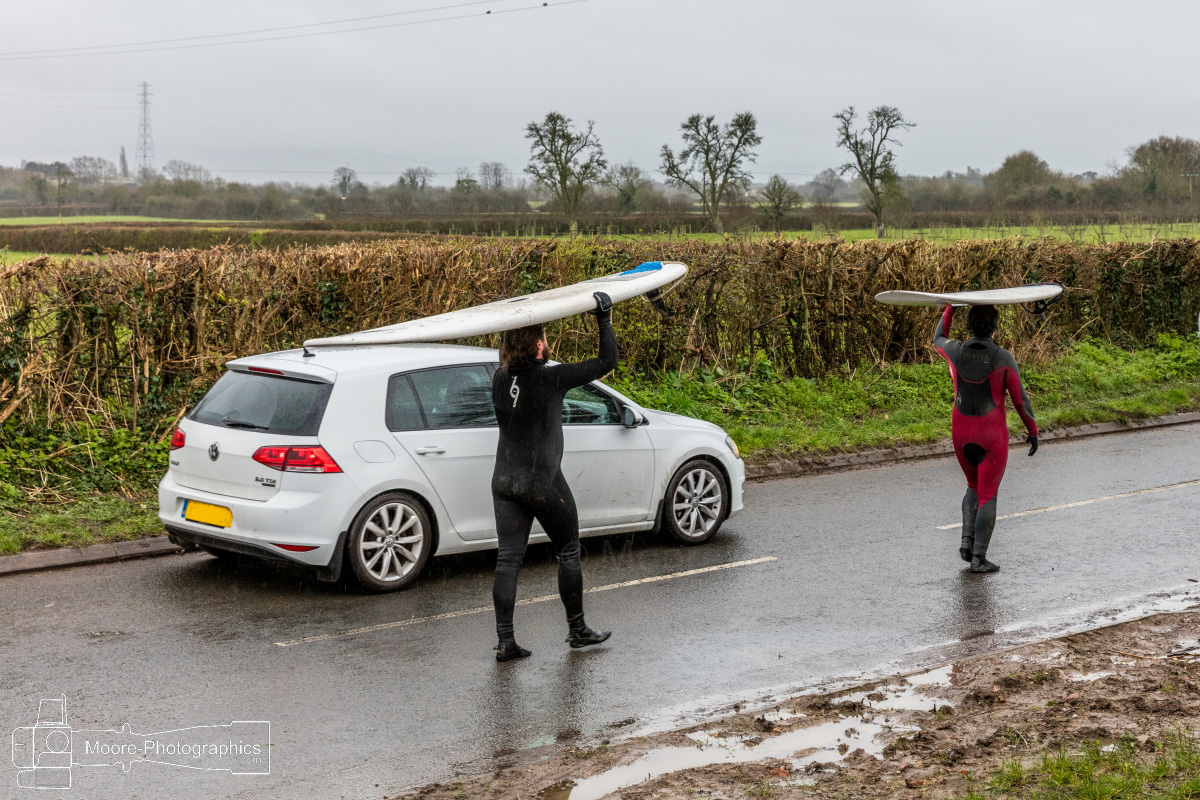The Severn Bore is quite a phenomenon in the South West, and attracts many visitors, including me.
I have photographed the Severn Bore on several occasions, and I love capturing the surfers riding the wave, and the whole atmosphere of the event. If you are lucky the wildlife also take part.
For me, the best images to capture are when the wave stretches right across the river – you then get the full effect, and that means it is usually a bigger wave for the surfers to ride.
More recently though, the bore has been much smaller, and only runs half way across.
For those of you who are keen photographers, I generally use my 24 – 70 lens and 70 – 200 lens on a pair of camera bodies, so that I don’t have to keep changing lenses.
10 Facts about the Severn Bore
- The River Severn has the 3rd highest tidal range in the world (behind only two in the US).
- The tidal range can be as much as 15m – created by a tidal surge from the estuary being funnelled up stream, as the river reduces in width and depth. The incoming tide meeting the river flowing to the sea creates the wave. As the oncoming surge of water travels it creates the wave. For around 20 miles of river, the bore can be seen dissipating and reforming, sometimes miles at a time. The river narrows around Minsterworth, meaning the bore has less area to spread over, which then causes the larger tides to increase in their height.
- Factors that contribute to a ‘good bore’ are a SW wind, which drives the bore, increasing its speed and power. They can move at a speed between 10 – 13 mph.
- The more sea water that flows in the river allows the tidal bore to travel further inland. Low air pressure is also a key factor – it allows the movement of water more freely.
- According to some sources, the largest bore on the Severn was October 15th 1966, when it reached an amazing 9.2ft.
- Spring and Autumn tides are the biggest, but most months during high tide, a bore will move up the Severn.
- There are between 250 and 260 bores a year but they only occur when the tide exceeds a certain height.
- The first time someone surfed the Severn Bore was in 1955, by Colonel ‘mad’ Jack Churchill. He made his own board. Now all over the world, surfers of all abilities take on the river bores.
- In 2006, Steve King set the World Record for the longest surfing ride on the Severn Bore – a distance of 7.6 miles. It took him an hour and 17 minutes.
- One of the hazards in the Estuary when there is a bore is the large number of semi-waterlogged tree trunks and huge roots that travel up and down the channel on every tide. Mostly originating up-river, they are lifted from the banks by flood water and carried down until the incoming tide pushes them back. Surfers riding the bore have to keep a look out for these.
Professional photographers aren’t always photographing for their clients – many photograph many things in their own downtime – it can be a wonderful way to relieve stress and deal with difficult things in their own lives or just because they love it.
For all your commercial photographic needs, please contact me: neil@moore-photographics.com


